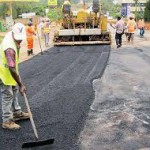Growth in sub-Saharan Africa is projected to remain at 3.2 percent in 2019 and rise to 3.6 percent in 2020. The expected recovery, however, is at a slower pace than previously envisaged for about two-thirds of the countries in the region, partly due to a challenging external environment, according to the IMF’s October 2019 regional economic outlook.
Growth is projected to remain strong in non-resource-intensive countries, averaging about 6 percent. As a result, 24 countries, home to about 500 million people, will see their per capita income rise faster than the rest of the world. In contrast, growth is expected to move in slow gear in resource-intensive countries (2½ percent). Hence, 21 countries are projected to have per capita growth lower than the world average. Reducing risks and promoting sustained and inclusive growth across all countries in the region requires carefully calibrating the near-term policy mix, building resilience, and raising medium-term growth.
Navigating Uncertainty
Growth is forecast to be slower than previously envisaged for about two-thirds of the countries in the region. The downward revision reflects a more challenging external environment, continued output disruptions in oil-exporting countries, and weaker-than-anticipated growth in South Africa.
Growth prospects vary considerably across countries in the region in 2019 and beyond. Growth is projected to remain strong in non-resource intensive countries, averaging about 6 percent. As a result, 24 countries, home to about 500 million people, will see their per capita income rise faster than the rest of the world. In contrast, growth is expected to move in slow gear in resource-intensive countries (2½ percent). Hence, 21 countries are projected to have per capita growth lower than the world average.
Competition, Competitiveness, and Growth in Sub-Saharan Africa
Although there is considerable heterogeneity across countries, more than 70 percent of the countries in the region are in the bottom half of countries globally in terms of market competition indicators. Firm markups are about 11 percent higher in sub-Saharan African countries relative to other emerging market economies and developing countries and are more persistent. State-owned firms are also more prevalent. Empirical analysis suggests that increased competition can boost real per capita GDP growth rate by about 1 percentage point through improved export competitiveness, productivity growth, and investment.
Domestic Arrears in Sub-Saharan Africa: Causes, Symptoms, and Cures
Based on a database of domestic arrears in sub-Saharan African countries, the report finds that domestic arrears have been pervasive in many countries, reflecting weak public financial management. Furthermore, arrears have increased in recent years (to about 3.3 percent of GDP in 2018), following the 2014 commodity price shock. However, despite the prevalence of arrears, their causes, effects, and consequences are not well understood. The report finds that domestic arrears negatively impact private sector activity and the delivery of social services while increasing banking sector vulnerabilities and undermining citizens’ trust in the government.
Arrears also weaken the ability of fiscal policy to support growth, casting doubt on the merit of relying on arrears financing to avoid spending cuts. The chapter then discusses approaches to clear arrears (verification, prioritization, liquidation) and to prevent their accumulation, including through public financial management reforms, building buffers, and timely external supports.







[…] READ MORE FROM ORIGINAL SOURCE […]